|
The History of coffee

The humble coffee shrub.
The history of coffee has been recorded as far back as the
ninth century . The cultivation of the coffee
bean and the origin of the drink is likely Ethiopia. It then spread through the Arab world where trade of the beans expanded, and the beans
were mass-cultivated. From there, coffee beans entered the
Indian and European markets when popularity of the beverage spread. The
coffee plant was eventually brought to the Americas in the early 18th Century, where cultivation became widespread.
In 1583, Leonhard Rauwolf, a German physician, gave this description of coffee
after returning from a ten-year trip to the Near East “A beverage as black as ink, useful against numerous
illnesses, particularly those of the
stomach. Its consumers take it in the morning, quite frankly, in a porcelain cup
that is passed around and from which each one drinks a cupful. It is composed of
water and the fruit from a bush called bunnu“.
From the Muslim world, coffee spread
to Italy. The thriving trade between Venice and North Africa, Egypt and the Middle
East brought many goods, including coffee, to the
Venetian port. From Venice, it was introduced to the rest of Europe. Coffee
became more widely accepted after it was deemed a Christian beverage by Pope
Clement VIII in 1600, despite appeals to ban
the "Muslim drink." The first European coffee house opened in Italy in 1645. The
Dutch were the first to import coffee on a large
scale, and they were among the first to defy the Arab prohibition on the
exportation of plants or unroasted seeds when Pieter van den Broeck smuggled
seedlings from Aden into Europe in 1616. The Dutch
later grew the crop in Java and
Ceylon. Through the efforts of the
British East India Company, coffee became
popular in England as well. It was introduced in France in 1657, and in Austria and
Poland after the 1683 Battle of Vienna, when coffee was captured from supplies of the defeated
Turks. The first exports of Indonesian coffee from Java to the Netherlands occurred in 1711.
When coffee reached North America during the Colonial period, it was initially not as
successful as it had been in Europe. During the Revolutionary
War, however, the demand for coffee increased so
much that dealers had to hoard their scarce supplies and raise prices
dramatically; this was also due to the reduced availability of tea from
British merchants. After the War of
1812 during which Britain temporarily cut off access to
tea imports, the Americans' taste for coffee
grew, and high demand during the American Civil War together with advances in brewing technology secured
the position of coffee as an everyday commodity in the United States. Noted as
one of the world’s largest, most valuable legally traded commodities (after
oil), coffee has become a vital cash crop for many Third World countries. Over one hundred
million people in developing countries have become dependent on coffee as their
primary source of income. Coffee has become the primary export and backbone for
African countries like Uganda, Burundi, Rwanda, and Ethiopia as well as many
Central American countries.
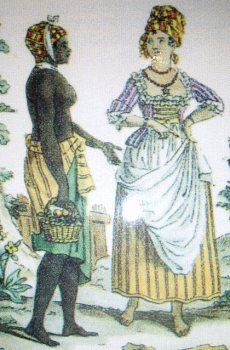 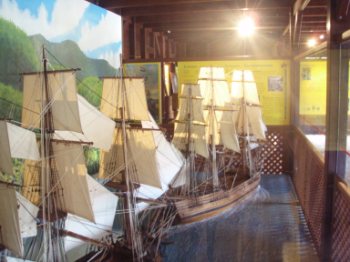 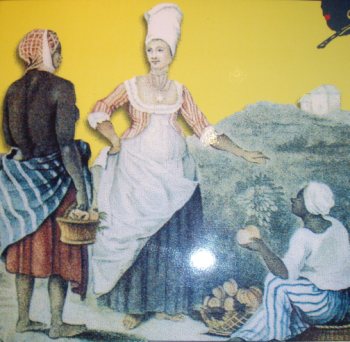
The Muslim world: The earliest mention of coffee may be a
reference to Bunchum in the works of the
10th century Persian physician
Razi, but more definite information on the
preparation of a beverage from the roasted coffee berries dates from several
centuries later. The most important of the early writers on coffee was Abd
al-Qadir al-Jaziri, who in 1587 compiled a work
tracing the history and legal controversies of coffee entitled Umdat al safwa fi
hill al-qahwa. He reported that one Sheikh, Jamal-al-Din al-Dhabhani, Mufti of Aden, was the first to adopt the use of coffee
(circa 1454). Coffee's usefulness in driving away sleep made it popular among
Sufis. A translation traces the spread of coffee from Arabia Felix (the present
day Yemen) northward to Mecca and
Medina, and then to the larger cities of Cairo,
Damascus, Baghdad and Istanbul.
Coffee beans were first exported from Ethiopia to
Yemen, traders brought coffee back to their homeland and began to cultivate
the bean. The first coffee house was Kiva Han, which opened in Istanbul in 1471.
Coffee was at first not well received. In 1511 it was forbidden for its
stimulating effect by conservative, orthodox imams at a theological court in
Mecca. However, the popularity of the drink led
these bans to be overturned in 1524 by an order of the Ottoman Turkish Sultan
Selim I, with Grand
Mufti Mehmet Ebussuud
el-Imadi issuing a celebrated fatwa allowing the consumption of coffee. In
Cairo a similar ban was instituted in 1532 and the coffeehouses and
warehouses containing coffee beans were sacked. Similarly, coffee was banned by
the Ethiopian Orthodox Church some time before the
17th century, along with smoking tobacco and chewing the mild stimulant
khat, as it was seen as a Muslim and pagan
practice. However, in the second half of the 19th century, Ethiopian attitudes
softened towards coffee drinking and its consumption spread rapidly between 1880
and 1886; according to Richard Pankhurst, "this was largely due to Emperor
Menilek, who himself drank it, and to Abuna
Matewos who did much to dispel the belief of the
clergy that it was a Muslim drink."
Europe: Coffee was first imported to Italy. The vibrant
trade between the Italian city of Venice and the Muslims in North Africa, Egypt,
and the East brought a large variety of African goods, including coffee, to this
leading European port. Venetian merchants decided to introduce coffee to the
wealthy in Venice, charging them heavily for the beverage. In this way, coffee
was introduced to Europe. Coffee became more widely accepted after it was
"baptised" by Pope Clement VIII in 1600 despite appeals to ban the Muslim drink.
The first European coffee house was opened in Italy in 1645.
England: Largely through the efforts of the British East
India Company and the Dutch East India
Company, coffee became available in England no later
than the 16th century according to Leonhard Rauwolf's 1583 account. The first coffeehouse in
England was opened in St. Michael's Alley in
Cornhill. The proprietor was Pasqua Rosée, the
servant of Daniel Edwards, a trader in Turkish goods. Edwards imported the
coffee and assisted Rosée in setting up the establishment. The popularity of
coffeehouses spread rapidly in Europe, and later, America. By 1675, there were
more than 3,000 coffeehouses in England. The banning of women from coffeehouses
was not universal, but does appear to have been common in Europe. In Germany
women frequented them, but in England they were banned. Many believed coffee to
have several medicinal properties in this period. For example, a 1661
tract entitled "A character of coffee and coffee-houses",
written by one "M.P.", lists some of these perceived virtues: “ ‘Tis extolled
for drying up the Crudites of the Stomack, and for expelling Fumes out of the
Head. Excellent Berry! Which can cleanse the English-man’s Stomak of Flegm, and
expel Giddiness out of his head”. Not everyone was in favour of this new
commodity however. The anonymous 1674 “Women’s Petition Against Coffee” declared
“The excessive Use of that Newfangled, Abominable, Heathenish Liquor called
COFFEE has Eunucht our husbands, and crippled our more kind Gallants.
France: Antoine Galland (1646-1715) in his aforementioned translation described
the Muslim association with coffee, tea and chocolate: "We are indebted to these
great Arab physicians for introducing coffee to the modern world through their
writings, as well as sugar, tea, and chocolate." Galland reported that he was
informed by Mr. de la Croix, the interpreter of King Loius
XIV of France, that coffee was brought to Paris
by a certain Mr Thevenot, who had travelled through the East. On his
return to that city in 1657, Thevenot gave some of the beans to his friends, one
of whom was de la Croix. However, the major spread of the popularity of this
beverage in Paris was soon to come. In 1669, Soleiman
Agha, Ambassador from Sultan Mehmed
IV, arrived in Paris with his entourage
bringing with him a large quantity of coffee beans. Not only did they provide
their French and European guests with coffee to drink, but they also donated
some beans to the royal court. Between July 1669 and May 1670, the Ambassador
managed to firmly establish the custom of drinking coffee among
Parisians.
Americas: Chevalier Gabriel Mathiew de
Clieu brought sprouts from the Noble Tree to
Martinique in the Caribbean circa
1720. Those sprouts flourished and fifty years
later there were 18,680 coffee trees on Martinique enabling the spread of coffee
cultivation to Haiti, Mexico and other islands of the
Caribbean. The Noble Tree also found its
way to the island of Reunion in the Indian
Ocean known as the Isle of
Bourbon. The plant produced smaller beans and was
deemed a different variety of Arabica known as var. Bourbon. The infamous Santos
coffee of Brazil and the
Oaxaca coffee of Mexico are the progeny of that
Bourbon tree. Circa 1727 the Emperor of Brazil sent Fransisco de Mello Palheta to French Guinea to obtain coffee seeds to become a part of the coffee
market. Francisco initially had difficulty obtaining these seeds yet he
captivated the French Governor's wife and she in turn sent him enough seeds and
shoots which would commence the coffee industry of Brazil. In 1893, the coffee
from Brazil was introduced into Kenya and Tanzania (Tanganyika), not far from its place of origin in
Ethiopia, 600 years prior, ending its transcontinental journey. The introduction
of coffee to the Americas is attributed to France through its colonization of
many parts of the continent, starting with Martinique and the colonies of the West
Indies where the first French coffee plantations
were founded. They relied heavily on African slave labourers. Two years after
the French Revolution, the slaves of Haiti, then the most profitable colony in the
Americas, successfully revolted under Jean-Jacques
Dessalines and created the first
independent country founded by former slaves.
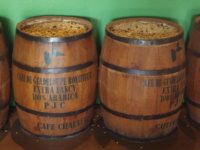 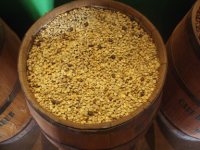  
Guadeloupe: In the 1800’s 10,000 hectares of coffee trees
are planted. 4,000 tons of Arabica coffee is exported to France each year. At
the turn of the 20th Century, hurricanes, sugar-cane and banana
growing dramatically reduces coffee production which falls to 600 tons in the
sixties to around 20 tons today. 1995 saw the creation of the co-operative of
Guadeloupe, the “ COPCAF” strengthening the field.
Production: The first coffee plantation in
Brazil occurred in 1727 when Lt. Col. Francisco de Melo Palheta smuggled seeds
from French Guinea. By the 1800's, Brazil's
harvests would turn coffee from an elite indulgence to a drink for the masses.
Brazil, which like most other countries cultivates coffee as a commercial
commodity, relied heavily on slave labour from Africa for the viability of the plantations until the
abolition of slavery in
1888. The success of coffee in 17th-century
Europe was paralleled with the spread of the habit of tobacco
smoking all over the continent during the course of
the Thirty Years' War (1618-1648).
For many decades in the 19th and early 20th centuries, Brazil
was the biggest producer of coffee and a virtual monopolist in the trade.
However, a policy of maintaining high prices soon opened opportunities to other
nations, such as Colombia, Guatemala, Nicaragua, Indonesia and
Vietnam, now second only to Brazil as the major coffee producer
in the world. Large-scale production in Vietnam began following normalization of
trade relations with the US in 1995. Nearly all of the coffee grown there is
Robusta.
Despite the origins of coffee cultivation in Ethiopia, that
country produced only a small amount for export until the Twentieth Century, and
much of that not from the south of the country but from the environs of
Harar the northeast. The Kingdom of Kaffa, home of the plant, was estimated to produce between
50,000 and 60,000 kilograms of coffee beans in the 1880’s. Commercial production
effectively began in 1907 with the founding of the inland port of
Gambela, and greatly increased afterwards: 100,000
kilograms of coffee was exported from Gambela in 1908, while in 1927-8 over 4
million kilograms passed through that port. Coffee plantations were also
developed in Arsi Province at the same time,
and were eventually exported by means of the Addis Ababa - Dijbouti
Railway. While only 245,000 kilograms were freighted
by the Railway, this amount jumped to 2,240,000 kilograms by 1922, surpassed
exports of "Harari" coffee by 1925, and reached 9,260,000 kilograms in 1936.
Australia is a minor coffee producer, with little product for export, but its
coffee history goes back to 1880 when the first of 500 acres (2.0
km2) began to be developed in an area between northern New South
Wales and Cooktown. Today there are several producers of Arabica coffee in
Australia that use a mechanical harvesting system invented in 1981.
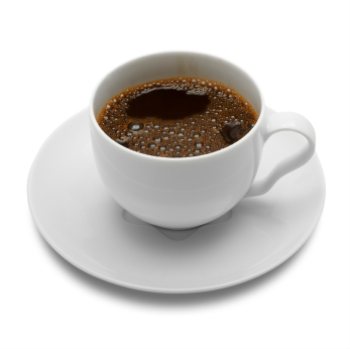
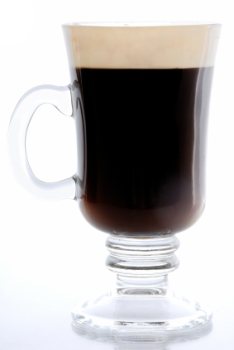 
Presentation: Once brewed, coffee may be
presented in a variety of ways. Drip-brewed, percolated, or
French-pressed/cafetière coffee may be served with no additives or sugar
(colloquially known as black) or with milk, cream, or both. When served cold, it
is called iced coffee . Espresso-based coffee has a wide variety of possible
presentations. In its most basic form, it is served alone as a shot or in the
more watered-down style cafe americano - a shot or two of espresso with hot water. The
Americano should be served with the espresso shots on top of the hot water to
preserve the crema. Milk can be added in various forms to espresso: steamed milk
makes a latte, equal parts espresso and milk froth make a
cappuccino, and a dollop of hot foamed
milk on top creates a cafe
macchiato. The use of steamed milk to form patterns such as
hearts or maple leaves is referred to as latte art.
A number of products are sold for the convenience of consumers
who do not want to prepare their own coffee. Instant
coffee is dried into soluble powder or
freeze-dried into granules that can be
quickly dissolved in hot water. Canned coffee has been popular in Asian countries for many years,
particularly in Japan and South
Korea. Vending machines typically sell varieties of flavoured canned coffee,
much like brewed or percolated coffee, available both hot and cold. Japanese
convenience stores and groceries also have a wide availability of bottled coffee
drinks, which are typically lightly sweetened and preblended with milk. Bottled
coffee drinks are also consumed in the United States. Liquid coffee concentrates are sometimes used in large
institutional situations where coffee needs to be produced for thousands of
people at the same time. It is described as having a flavour about as good as
low-grade robusta coffee, and costs about 10¢ a cup to produce. The machines
used can process up to 500 cups an hour, or 1,000 if the water is
preheated.
Coffee is now considered the national drink
of Ethiopia for people of all faiths.
Health and pharmacology: Coffee ingestion on
average is about a third of that of tap water in North America and
Europe. Worldwide, 6.7 million metric tons of coffee were produced annually in 1998 - 2000, and
the forecast is a rise to 7 million metric tons annually by 2010.
Scientific studies have examined the relationship between
coffee consumption and an array of medical conditions. Findings are
contradictory as to whether coffee has any specific health benefits, and results
are similarly conflicting regarding the negative effects of coffee consumption.
Coffee consumption has been linked to breast size reduction, and regular
caffeine intake reduces the risk of breast cancer. Coffee appears to reduce the
risk of Alzheimer's disease, Parkinson's disease , heart disease,
diabetes mellitus type 2, cirrhosis of the liver and
gout. A longitudinal study in 2009 showed that moderate drinkers of
coffee (3-5 cups per day) had lower chances of getting
Dementia, in addition to Alzheimer's
disease . It increases the risk of acid
reflux and associated diseases. Some health effects
of coffee are due to its caffeine content, as the benefits are only observed in those who
drink caffeinated coffee while others appear to be due to other components. For
example, the antioxidants in coffee prevent
free radicals from causing cell damage.
Coffee consumption can lead to iron deficiency anaemia in mothers and
infants. Coffee also interferes with the absorption of supplemental iron.
American scientist Yaser Dorri has suggested that
the smell of coffee can restore appetite and refresh olfactory receptors. He suggests that people can regain their
appetite after cooking by smelling coffee beans, and that this method can also
be used for research animals. Many high end perfume shops now offer coffee beans
to refresh the receptors between perfume tests.
Over 1,000 chemicals have been reported in roasted coffee; more
than half of those tested (19/28) are rodent carcinogens . Coffee's negative health effects are often blamed on
its caffeine content. Research suggests that
drinking caffeinated coffee can cause a temporary increase in the stiffening of
arterial walls. Coffee is no longer thought to be a risk factor for coronary
heart disease. Some studies suggest that it
may have a mixed effect on short-term memory, by improving it when the information to be recalled is
related to the current train of thought but making it more difficult to recall unrelated
information. About 10% of people with a moderate daily intake (235 mg per day)
reported increased depression and anxiety when caffeine was withdrawn, and about
15% of the general population report having stopped caffeine use completely,
citing concern about health and unpleasant side effects.
Caffeine content: Depending on the type of coffee and
method of preparation, the caffeine content of a single serving can vary
greatly. On average, a single cup of coffee (about 200
millilitres ) or a single shot of espresso
(about 30 ml) can be expected to contain the following amounts of
caffeine:
ALL IN ALL let's have a nice cup of
tea.
|














